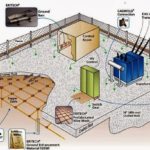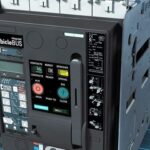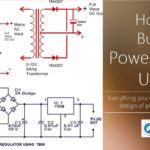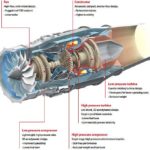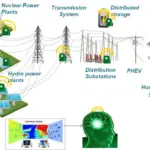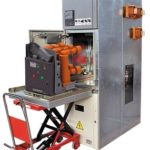The most appropriate type of substation depends on such factors as voltage level, load capacity, environmental considerations, site space limitations, and transmission line right of way requirements. The design criteria of the substation can vary among the system.
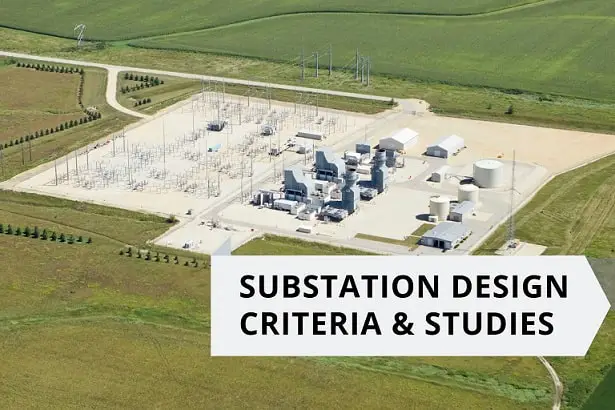
With the continuing general increase in the cost of equipment, labor, land and site treatment every effort must be made to select criteria that represent the best compromise to satisfy system requirements at minimum cost.
The major costs are reflected in the power transformer, circuit breakers disconnecting switches. The bus layout and switching arrangement selected will determine the number of switches and power circuit breakers required. The choice of insulation level and coordination practices affect cost considerably.
Factors must be considered in the selection of bus layout and switching arrangements for a substation to meet system and station requirements, are
- the substation must be reliable, economical, safe
- simple in design as possible to provide a high level of service continuity,
- provision for further expansion,
- the flexibility of operation and
- initial and ultimate costs.
Studies for the Design of Substation
- Load flow studies
- Short circuit studies
- Transient stability studies
- Transient overvoltage studies
Load flow studies
The purpose of a substation is to provide a path for reliable delivery of power to system loads.
Load flow studies establish the current carrying requirements of a new substation, when all lines are in and when selected lines are out for maintenance.
After studying a number of load flow cases, the continuous and emergency ratings required for various equipment can be determined. The load center also can be finalized by load flow studies.
Short circuit studies
In addition to the continuous current ratings, the substation equipment must have short time ratings.
These must be adequate to permit the equipment to sustain, without damage the severe thermal and mechanical stresses of short circuit currents.
In order to provide adequate interrupting capability in the breakers, strength in post insulators and appropriate setting for protective relays, which sense the fault current.
Transient stability studies
Under normal conditions, the mechanical input to a generator will be equal to the electrical output plus generator losses. So long as this continues, the system generators rotate at 50Hz.
If this balance is destroyed by upsetting the mechanical or the electrical flow, the generator speed deviates from 50Hz and begins to oscillate about a new equilibrium point.
The factors which affect the stability are
- the severity of the fault,
- the speed with which the fault is cleared and
- ties between the machine and the system after the fault is cleared.
The aspects of transient stability that are important in substation design are
- the type and speed, of the line and bus protection,
- relaying,
- the interrupting time of the breaker and
- the bus configuration after the fault has been cleared.
Transient overvoltage studies
Transient overvoltage may be due to lightning strokes or circuit switching. The most reliable means to establish switching overvoltage is through the use of a transient network analyzer (TNA) study.
Substation Arrangements
System security
The ideal substation is one where each circuit is controlled by a separate breaker with facilities for replacement of bus bar or breaker in the event of a fault or during maintenance.
System security may be specified, based on whether complete reliance on the integrity of the substation for a percentage of outage due to periodic faults or maintenance is permissible.
Operational flexibility
For the efficient loading of the generators, it is necessary to control the MVA and MVAR loading under all conditions of circuit connections.
The grouping of load circuits requires to capable of being arranged giving the best control under normal and emergency conditions.
Simplicity of protection arrangements
If more than one circuit is to be controlled from one CB or greater number of CBs is to be tripped during a fault condition, the protection arrangements are complex.
The most advantageous arrangement is a single bus bar with no sectionalizing.
Ability to limit short circuit levels
Any arrangement which incorporates means of providing a substation into two separate sections either completely or through reactor coupling is suitable for limiting short circuit levels.
Maintenance facilities
During the operation of the substation, maintenance will have to be carried out, either planned or emergency. The performance of the substation during maintenance is also dependent on the protection arrangements
Ease of extension
The substation arrangement shall be such that extension of bays for new feeders are possible as the system expands, there shall be space and expansion facilities
Site considerations
The availability of the site plays an important role in planning the substation. The substations which are simple in diagram and use least number of breakers occupy the least site.
Economy
A better switching arrangement on technical requirements can be constructed if the economics are reasonable.
